Marty Nemko's Blog, page 427
November 18, 2013
Degrees? Bah, Humbug!
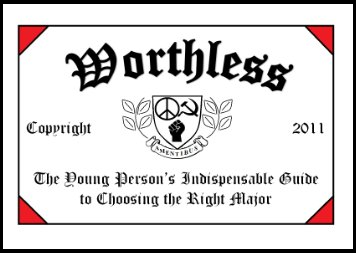 At the risk of redundancy, how could I write a "Bah Humbug" series without including a column called, "Degrees? Bah, Humbug!" That's my USNews.com last week. HERE is the link.
At the risk of redundancy, how could I write a "Bah Humbug" series without including a column called, "Degrees? Bah, Humbug!" That's my USNews.com last week. HERE is the link.
Published on November 18, 2013 12:45
College Degrees? Bah, Humbug!
 At the risk of redundancy, how could I write a "Bah Humbug" series without including a column called, "Degrees? Bah, Humbug!" That's my USNews.com last week. HERE is the link.
At the risk of redundancy, how could I write a "Bah Humbug" series without including a column called, "Degrees? Bah, Humbug!" That's my USNews.com last week. HERE is the link.
Published on November 18, 2013 12:45
November 13, 2013
PhDs: Should You Be a Researcher?

Science PhDs, near-PhDs, and postdocs frequently ask me, "Should I stay in research?" This self-assessment may help. Rate yourself on each of these:
1. Cognoscenti frequently praise your ability to design and lead implementation of important experiments ___ (0 to 10 points.)
2. You love doing research so much it would be very painful to give it up. ___ (0 to 10 points.)
3. Your area of research expertise is well-funded (for example, cancer, Alzheimer's, and autism yes, intelligence, botany, history of science, no) ___ (0 to 10 points.)
4. You have and are likely to develop strong connections with luminaries in your field. ___ (0 to 10 points.)
5. You have the patience necessary for research. Typically many, many carefully done experiments must be conducted over a number of years to make even a modest contribution to your field. ___ (0 to 10 points.)
6. You are quite willing to do your research for a company as well as for a university or research institute. ___ (0 to 10 points.)
7. If you're not able to land a researcher or professor position, you are willing to (or already have done) a few-year post-doc. ___ (0 to 10 points.)
8. Your reports on your research will be of excellent integrity even though there are ample opportunities to fudge results. ___ (0 to 10 points.)
9. Your PhD and, if applicable, your postdoc are from an institution renowned for research, especially in your field. ___ (0 to 10 points.)
10. You are happy to put in 60+ hours a week and, if you have a spouse or other long-term domestic partner, s/he truly accepts that. (0 to 10 points.)
11. You are an excellent communicator, able to persuasively present your research in written proposals and articles as well as in oral presentations. (0 to 10 points.)
UTTERLY UNVALIDATED SCORING KEY
95-110 You almost certainly should persevere in pursuing your career as a researcher
80-95 You probably should
60-80 Perhaps you should
40-60 You probably should try to identify other career options
< 40 You almost certainly should try to identify other career options.
Published on November 13, 2013 19:09
November 9, 2013
The Handout from My Society for Neuroscience workshop: Actively Managing Your Career and Life: What They Didn't Teach You in School.
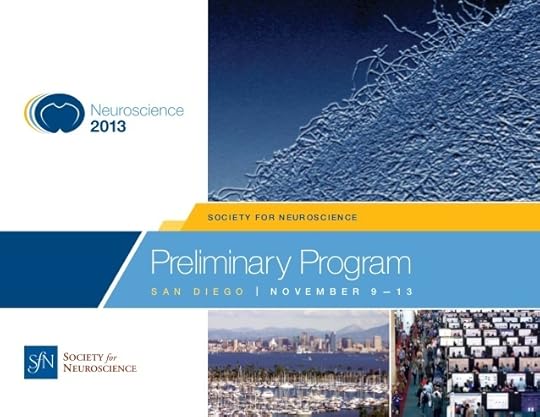
Monday, I'll be giving a 2 1/2 hour workshop at the Society for Neuroscience's national conference: Actively Managing Your Career
and Life: What They Didn’t Teach You in School.
Even if your career has nothing to do with neuroscience, you may find my handout for that workshop useful.
Actively Managing Your Career
and Life: What They Didn’t Teach You in School
SfN National
Conference, Nov. 11, 2013
Marty Nemko
I. Direction
A. Developing your personal mission statement:
1. What
is/are your best skill(s)/ability(ies) that you enjoy using? _______________________
2. What
is/are the goal(s) you’re most interested in achieving/abetting? Consider
prioritizing goals that aren’t already adequately addressed by others.
___________________________________________________________________________
3. What then
is your personal mission statement? For example, mine is: Write and speak to abet capable peoples' careers, improve education
for the intellectually gifted, and support efforts to increase understanding of
the biological basis of intelligence.
B. How many degrees of
pivot should you make regarding your:
1.
career: __ Nature
of pivot: ___________________________________
2.
research agenda: __ Nature of pivot:
___________________________________
3.
proposal writing: __ Nature of pivot: ___________________________________
4.
teaching: __ Nature of pivot:
___________________________________
5.
advising: __ Nature of pivot:
___________________________________
6.
service: __ Nature of pivot:
___________________________________
7.
professional devel: __ Nature of pivot: ___________________________________
8.
relationships: __ Nature of pivot:
___________________________________
9.
avocation(s): __ Nature of pivot:
___________________________________
Put a plus or minus sign next to any of the nine you’d like to allocate
more or less time to.
II .
Efficiency
A. Create a grid with the
days of the week at the top and each hour you’re awake down the left side. Then
write, hour-by-hour, how you spend a typical week. Anything you want to spend
more or less time on? __________________________________________________
B. Is there anything you
want to do more/less thoroughly? For example, are your literature reviews too
thorough or not thorough enough? ____________________________________
C.
You likely can do most tasks better
yourself but is the opportunity cost worth it? So, do you want to make more
effort to delegate: get grad students, interns, a personal assistant? If so, write
what you want to do: _____________________________________________
D. When tempted to procrastinate on a project:
1. Create a “fundraising thermometer” with all the
project’s milestones. If you’re not sure what those should be, ask an expert
for help.
2. Be vigilant to the moment of truth: when you’re deciding,
usually unconsciously, whether or not to work on that project.
2a. At that
moment, remind yourself of the key benefit of getting that task done. Then identify
your next one-second task on that
project.
3. Get
comfortable being uncomfortable but keep looking for an enjoyable way to tackle
a task.
III.
Communication
A. Especially if you’ve
been called long-winded, try the traffic-light
rule in both professional and personal contexts: 0-30 seconds of an
utterance=green, 30-60=yellow, 60+ red. Only rarely run a red light. You’ll
find it easier to be concise if you’re, ongoing, asking yourself, “Does my
listener need or want this information?”
B. It’s often wise to use a lecture not to disseminate information but to generate on-the-spot
interactivity. For example, in an SfN presentation on your research, instead of
just describing your research, have the audience read a 1-2 page summary of
your research that highlights your questions and concerns about it. Devote most
of the session to getting audience input on those.
C. Many lectures fail because of the tyranny of content: cramming lots of content into the talk—Audiences
usually remember little from such talks. Lectures are generally more successful
when a small amount of crucial content is presented perhaps with compelling examples,
followed by getting the audience to actively engage in the content, for
example, using Think-Pair-Share.
D. An easy way to generate active audience engagement is to ask a
question and then—to increase engagement-- wait five to ten seconds before
calling on someone.
IV. Grant
acquisition
A. Should you add a
prestigious collaborator to your proposal? If so, who? _____________.
B. Funders want to invest
in research that will produce a publication in a high-impact journal. To
maximize the chances of that and to clarify the experiments and analyses you’ll
need to write, draft the journal article before
creating your grant application.
C. Write clearly. Reading
proposals is low-priority for many reviewers. They may even have a glass of
wine while reading it. If compelling,
crystalline writing not a strength of yours, carefully choose someone to rewrite
your first draft.
D.
A proposal’s most
important section isn’t Approach ,
it’s Aims. That section must
compellingly and concisely explain why your proposal deserves funding over
other excellent proposals. For example, this yielded an NIH grant:
Our studies promise to
significantly abet the field of human immunity to tuberculosis, as they will
markedly expand our knowledge of targets of human T cells in M. tuberculosis,
enable novel studies and discoveries not currently possible, and provide a
pathway to more efficacious TB vaccines.
E.
To avoid unnecessary rejection, explain
why you’re using any unconventional approaches.
F.
Get experts and non-experts in your
field to critique your proposal before submitting.
G. Early on, email your proposal’s abstract to a
program officer and call a day or two later with questions.
V. Managing up
A.
In planning how to ask a higher-up for something, consider whether s/he is
persuaded more by verbal or written pitches, short or
long presentations, facts or feelings. Point out any synergy with the
higher-up’s priorities.
B. In making your request, should you form a coalition, if only a
letter of support from an authority?
C. Do you need to apply pressure: make a demand or threat, or give
frequent reminders?
VI. Minimize
retrospection. Yes, learn
what you can from a past negative experience, but most successful people then
follow my father’s advice: Don’t look back; take the next step forward.
Published on November 09, 2013 17:01
My Handout from My Society for Neuroscience workshop: Actively Managing Your Career and Life: What They Didn’t Teach You in School.

Monday, I'll be giving a 2 1/2 hour workshop at the Society for Neuroscience's national conference: Actively Managing Your Career
and Life: What They Didn’t Teach You in School.
Even if your career has nothing to do with neuroscience, you may find my handout for that workshop useful.
Actively Managing Your Career
and Life: What They Didn’t Teach You in School
SfN National
Conference, Nov. 11, 2013
Marty Nemko
I. Direction
A. Developing your personal mission statement:
1. What
is/are your best skill(s)/ability(ies) that you enjoy using? _______________________
2. What
is/are the goal(s) you’re most interested in achieving/abetting? Consider
prioritizing goals that aren’t already adequately addressed by others.
___________________________________________________________________________
3. What then
is your personal mission statement? For example, mine is: Write and speak to abet capable peoples' careers, improve education
for the intellectually gifted, and support efforts to increase understanding of
the biological basis of intelligence.
B. How many degrees of
pivot should you make regarding your:
1.
career: __ Nature
of pivot: ___________________________________
2.
research agenda: __ Nature of pivot:
___________________________________
3.
proposal writing: __ Nature of pivot: ___________________________________
4.
teaching: __ Nature of pivot:
___________________________________
5.
advising: __ Nature of pivot:
___________________________________
6.
service: __ Nature of pivot:
___________________________________
7.
professional devel: __ Nature of pivot: ___________________________________
8.
relationships: __ Nature of pivot:
___________________________________
9.
avocation(s): __ Nature of pivot:
___________________________________
Put a plus or minus sign next to any of the nine you’d like to allocate
more or less time to.
II .
Efficiency
A. Create a grid with the
days of the week at the top and each hour you’re awake down the left side. Then
write, hour-by-hour, how you spend a typical week. Anything you want to spend
more or less time on? __________________________________________________
B. Is there anything you
want to do more/less thoroughly? For example, are your literature reviews too
thorough or not thorough enough? ____________________________________
C.
You likely can do most tasks better
yourself but is the opportunity cost worth it? So, do you want to make more
effort to delegate: get grad students, interns, a personal assistant? If so, write
what you want to do: _____________________________________________
D. When tempted to procrastinate on a project:
1. Create a “fundraising thermometer” with all the
project’s milestones. If you’re not sure what those should be, ask an expert
for help.
2. Be vigilant to the moment of truth: when you’re deciding,
usually unconsciously, whether or not to work on that project.
2a. At that
moment, remind yourself of the key benefit of getting that task done. Then identify
your next one-second task on that
project.
3. Get
comfortable being uncomfortable but keep looking for an enjoyable way to tackle
a task.
III.
Communication
A. Especially if you’ve
been called long-winded, try the traffic-light
rule in both professional and personal contexts: 0-30 seconds of an
utterance=green, 30-60=yellow, 60+ red. Only rarely run a red light. You’ll
find it easier to be concise if you’re, ongoing, asking yourself, “Does my
listener need or want this information?”
B. It’s often wise to use a lecture not to disseminate information but to generate on-the-spot
interactivity. For example, in an SfN presentation on your research, instead of
just describing your research, have the audience read a 1-2 page summary of
your research that highlights your questions and concerns about it. Devote most
of the session to getting audience input on those.
C. Many lectures fail because of the tyranny of content: cramming lots of content into the talk—Audiences
usually remember little from such talks. Lectures are generally more successful
when a small amount of crucial content is presented perhaps with compelling examples,
followed by getting the audience to actively engage in the content, for
example, using Think-Pair-Share.
D. An easy way to generate active audience engagement is to ask a
question and then—to increase engagement-- wait five to ten seconds before
calling on someone.
IV. Grant
acquisition
A. Should you add a
prestigious collaborator to your proposal? If so, who? _____________.
B. Funders want to invest
in research that will produce a publication in a high-impact journal. To
maximize the chances of that and to clarify the experiments and analyses you’ll
need to write, draft the journal article before
creating your grant application.
C. Write clearly. Reading
proposals is low-priority for many reviewers. They may even have a glass of
wine while reading it. If compelling,
crystalline writing not a strength of yours, carefully choose someone to rewrite
your first draft.
D.
A proposal’s most
important section isn’t Approach ,
it’s Aims. That section must
compellingly and concisely explain why your proposal deserves funding over
other excellent proposals. For example, this yielded an NIH grant:
Our studies promise to
significantly abet the field of human immunity to tuberculosis, as they will
markedly expand our knowledge of targets of human T cells in M. tuberculosis,
enable novel studies and discoveries not currently possible, and provide a
pathway to more efficacious TB vaccines.
E.
To avoid unnecessary rejection, explain
why you’re using any unconventional approaches.
F.
Get experts and non-experts in your
field to critique your proposal before submitting.
G. Early on, email your proposal’s abstract to a
program officer and call a day or two later with questions.
V. Managing up
A.
In planning how to ask a higher-up for something, consider whether s/he is
persuaded more by verbal or written pitches, short or
long presentations, facts or feelings. Point out any synergy with the
higher-up’s priorities.
B. In making your request, should you form a coalition, if only a
letter of support from an authority?
C. Do you need to apply pressure: make a demand or threat, or give
frequent reminders?
VI. Minimize
retrospection. Yes, learn
what you can from a past negative experience, but most successful people then
follow my father’s advice: Don’t look back; take the next step forward.
Published on November 09, 2013 17:01
November 8, 2013
10 Commandments of TED for a powerful presentation
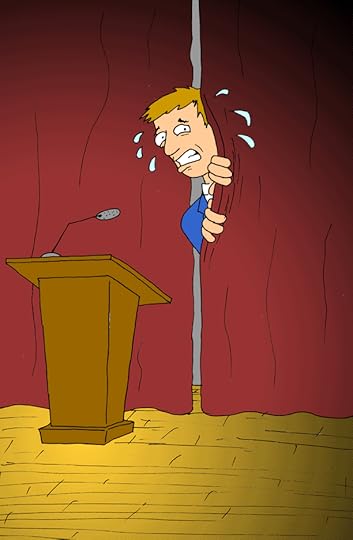
In my view, these 10 commandments for public speaking from TED are absolutely right-on.
Thou Shalt Not Simply Trot Out thy Usual Shtick.
Thou Shalt Dream a Great Dream, or Show Forth a Wondrous New Thing, Or Share
Something Thou Hast Never Shared Before.
Thou Shalt Reveal thy Curiosity and Thy Passion.
Thou Shalt Tell a Story.
Thou Shalt Freely Comment on the Utterances of Other Speakers for the Sake
of Blessed Connection and Exquisite Controversy.
Thou Shalt Not Flaunt thine Ego. Be Thou Vulnerable. Speak of thy Failure as
well as thy Success.
Thou Shalt Not Sell from the Stage: Neither thy Company, thy Goods, thy
Writings, nor thy Desperate need for Funding; Lest Thou be Cast Aside into Outer
Darkness.
Thou Shalt Remember all the while: Laughter is Good.
Thou Shalt Not Read thy Speech.
Thou Shalt Not Steal the Time of Them that Follow Thee.
Paul Dunn and TED
Published on November 08, 2013 08:59
November 4, 2013
Follow Your Passion? Bah Humbug!
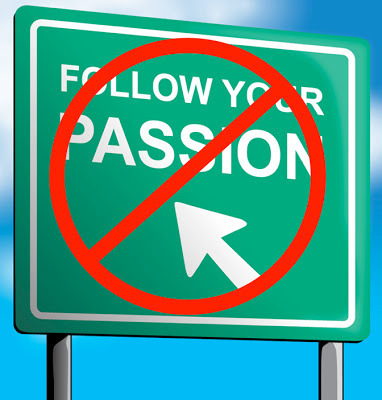
If career counselors had a motto, it would be "Follow your passion." Alas, truth is, in choosing a career, if you do what you love, poverty usually follows.
That's because most people's passions are in just a few areas so 10 zillion people apply for each good job.
And because of that, most employers pay poorly for most such cool careers and treat you poorly knowing there are 10,000 wannabes champing for the opportunity to be treated poorly.
My USNews.com piece today, Bah, Passion is the first in my weekly "Bah..." series in which I reveal my inner Scrooge and offer straight talk about career issues.
Published on November 04, 2013 08:20
November 3, 2013
21 Reasons a Dog is the Best Investment You'll Ever Make.
Published on November 03, 2013 23:08
October 29, 2013
Einstein, My Co-Counselor (For dog lovers only)
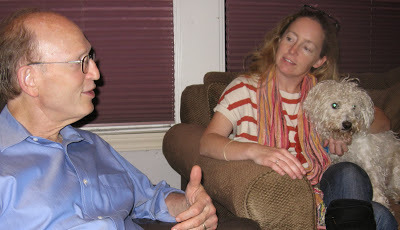
A real client (permission to publish granted), Einstein, and me
I just submitted this for publication to The Bark. I thought you might enjoy it.
Einstein, My Co-Counselor
By Marty Nemko
To be accurate, Einstein is
my receptionist, co-counselor, stress management consultant, and fitness
trainer. He greets my clients with an
enthusiasm no paid receptionist could match. I mean, even if I paid a
receptionist $100,000 a year, s/he wouldn't give each client a big sloppy kiss.
Following the few-second
love fest, Einstein gives a new meaning to the term “lap dog:” In his
excitement, he runs laps around the house, each time breaking the land-speed
record. It’s the Barktona 500.
Fortunately, Einstein
recognizes he has another job. So after he’s completed his appointed (ahem)
rounds, he downshifts and escorts the client to the sofa, of course, sitting
right next to him if not on his lap bestowing another round of kisses. Of
course, there’s the occasional client who prefers career counseling without a
face washing, in which case the client eases Einstein off the sofa. In those
cases, undeterred, Einstein assumes the position---head on the client’s
shoes.
Jack of all trades, master
of all, Einstein is my co-counselor. Even though I’m a career counselor not a
psychotherapist, sometimes a client gets anxious during a session. After all,
it’s not easy to discuss having been unemployed for eons and now trying to land
a good job at a time when they’re harder to find than a perfect and cheap dog
sitter who’ll stay at your house 24/7. So when clients feel stressed, they often
pet Einstein and if they were already petting him, they tend to speed up—a
useful anxiety detector for me.
Sometimes, Einstein has yet
another job: doggie playmate. If I learn that my client has a dog who won’t pee
on my carpet to show Einstein who’s boss—I invite, no I urge, the client to
bring said pooch. Einstein then--ever the flexible host--leads whatever activity
the guest desires: from more laps to play fighting to dog-to-dog snuggling.
Einstein is even gracious enough to allow guests to share his kibble, an offer
most of my human guests pass on.
Einstein wears two other
hats. He’s my stress management consultant, on call 24/7. When stressed, I’ll
often snuggle up to him on the floor, nose to nose, and rub his belly. 30 seconds of that makes
anxiety a physical impossibility.
Einstein is also my fitness
trainer. Without him, it would be too tempting to stay on my butt but Einstein
needs his exercise and poopertunities, so we take walks four times a day, one a
vigorous 45-minute hike. An overpriced, overmuscled fitness trainer couldn't keep me that diligent.
Lest you think Einstein is
the perfect dog, I’d like to acquaint you with what he was like before he
matured into a multitasking professional.
When I walked into the
pound’s adoption area, I was greeted in the first cage by a pit bull who sort of
snarled. I sped up. In the next cage, a Rottweiler retreated in fear. I walked
on by. But in the third cage, a little white terrier with a poodley face got on
his back legs and pawed the cage squealing, “Please take me out. Puhleeze!” The
attendant told me that that sweet dog had been thrown over the fence into the
pound’s parking lot in the middle of the night and was found in the morning
clutching a barbecued rib.
“Want to take him for a
walk?” "You betcha," I replied. And I swear, the doggie knew it was an audition. He stood up
as straight and proud as he could, bent his head down so the attendant could put
the leash on and when the attendant handed me the leash, tail up, he smartly led
me toward the door. We got outside and he continued to walk perfectly—without
pulling—until he found an irresistible bush to pee on. He was trained! Of course, it had been love at first sight, a
love made practical when I saw that perfectly placed leg lift. Unfortunately,
pound policy required My Doggie to stay there for seven days lest the owner
(“mean owner, bad owner, bad owner”) decided to reclaim him. Can you imagine how
hard it was for me to have to leave My Doggie there in that cage?! The very first minute the pound opened on the
seventh day, I phoned, “Is that little white terrier/poodle mix still
available?” Yup. I jumped in the car and retrieved him from prison. He jumped
happily on me, then equally happily into the car---Yay, he likes car rides! He didn't, however, like our next stop—the vet for neutering. But he handled it
just the way a sweet doggie should, without a hint of a
growl.
Alas, while his trials were
over, mine were just beginning. I named him Einstein because of his looks and
somehow hoping that the educators are right: students live up to high
expectations. Nope: Einstein is no Einstein. His name is false advertising. He
may be as sweet as they come but he’s dumb as dirt. And although he was almost a
year old, he still had a bad case of puppy hyperactivity on top of new-home
anxiety. Within the first week, “Einstein” had eaten the only pair of eyeglasses I've ever felt looked good on me and he ate a hole in three, yes, three carpets.
Let me issue a cautionary
note here. They say doggies are comfortable in a crate. That certainly did not
mean that Einstein was comfortable in an enclosed room, even though it had a
doggie door to the backyard. Now, isn't that as nice as a “crate” can get? I
had to leave the house and so I left him in that room with food and water, plus
music on to keep him company. When I returned, everything---books, paintings,
papers-- were strewn all over the floor. Was it an earthquake? A tornado? No. It
was Einstein. Worse, he had eaten the carpet next to the door in a frantic
attempt to escape the luxury “crate.”
And that wasn't the worst
thing. A day or two later, Einstein decided to make a meal of my medication. The
fact that it was in a sealed pill bottle didn't stop goal-oriented Einstein.
He treated it like a chew toy with a treat inside that he’d get as a reward for
pulling it apart. Alas, the reward was 20 pills. Off to the vet to get his
stomach pumped.
But scariest of all was one
morning when I opened the door to get the newspaper. Einstein escaped and tore
down the street. I--in my tee shirt, shorts, and slippers—raced after him.
While there are many turns he could have chosen, he picked the one that put him
on the freeway on-ramp. I chased him up
the ramp and for the first time in my life, I was grateful for traffic. The
freeway was dead-stopped. Knowing Einstein likes being in the car, I yelled ahead, “Someone, open your car
door!” Miraculously, someone divined
that I wasn't a stalker, opened the door, whereupon Einstein jumped in and my
idiot was saved.
But believe me, it has all
been worth it. Like so many dog owners, and I’m guessing it’s especially true of
The Bark readers, Einstein is a truly beloved family member. I’m embarrassed to
admit it but I care about my doggie more than I do most people. I love him
almost as much as my wife. He’s a true member of the family, even if he weren't the world’s best receptionist, co-counselor, stress reducer, and fitness
trainer.
Published on October 29, 2013 18:35
October 28, 2013
Will You Shine in a Job Interview?

We're never as engaged in reading material as we are when we read a test question. So of late, I've been making my USNews.com posts a quiz. Today's is Will You Shine in a Job Interview?
Published on October 28, 2013 09:34
Marty Nemko's Blog
- Marty Nemko's profile
- 4 followers
Marty Nemko isn't a Goodreads Author
(yet),
but they
do have a blog,
so here are some recent posts imported from
their feed.




